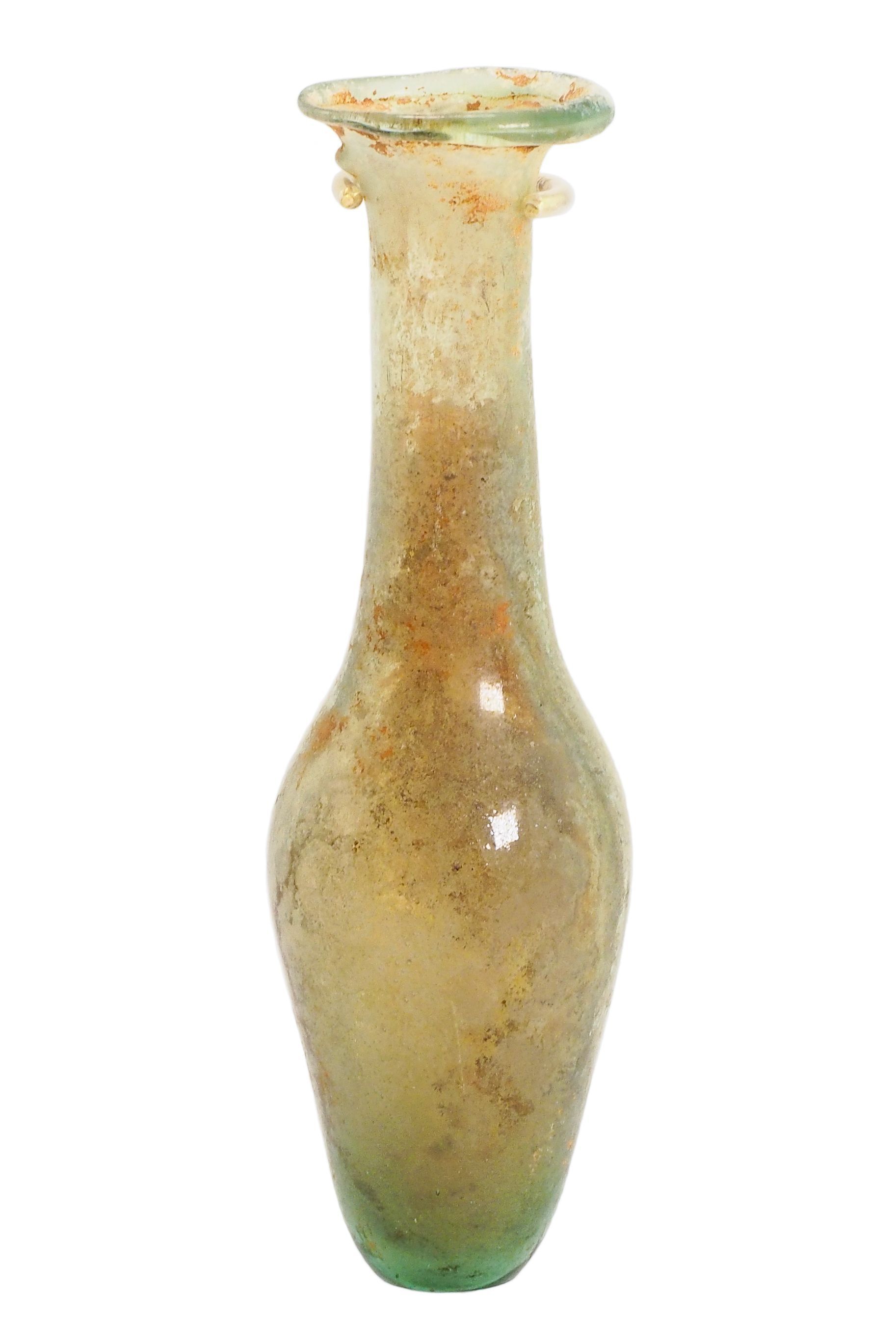Unguentarium
Name/Title
UnguentariumEntry/Object ID
11NE-Mi4-142Description
The rim is unevenly folded inwards creating a thick rounded lip on one half of the vessel. The mouth is funneled. Below the rim is a secondary fold that runs half way around the cylindrical neck. The neck widens to join the shoulders of a conical body. The base is rounded. The vessel is intact with iridescence, trace encrustation, and a label to the side.Use
Perfume VesselContext
The narrow mouths of unguentaria are thought to be suited to holding liquids such as water, wine, or even more viscous substances like oil or honey. However, with scientific analysis it has been found that unguentaria also stored pigments and pastes for cosmetic or medicinal purposes. They were also used to hold balms or perfumes. Ancient textual sources also indicate that unguentaria were used to hold dangerous substances (magical or toxic) for ritual purposes. However, their main purpose was to hold perfumes in everyday use or 'holy' oils for funerary rituals.Made/Created
Date made
300 CE - 400 CETime Period
Late AntiqueEthnography
Culture/Tribe
Near Eastern - Syro-Palestine

